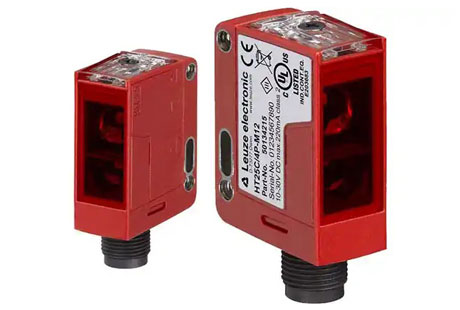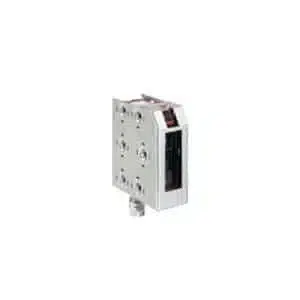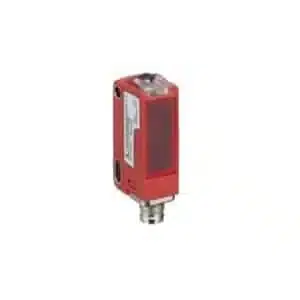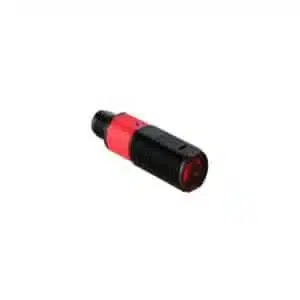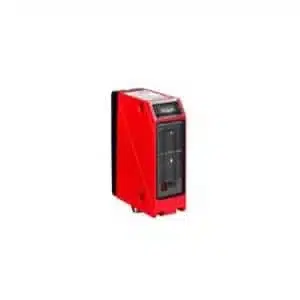Leuze Photoelectric Sensor: Beam & Retro-Reflective Sensors
Request a Quote For Leuze Photoelectric Sensor
Explore the perfect Leuze photoelectric sensor for your industrial requirements with IndMALL Automation. Our comprehensive range showcases advanced Leuze photo sensors, guaranteeing precision and effectiveness in detection.
Browse through our array to identify various Leuze electronic photoelectric sensor models, embracing Leuze through-beam photo sensors, Leuze retro-reflective sensor alternatives, and Leuze diffuse photo sensors. Whether opting for the Leuze through-beam sensor or another model, be assured that you’re choosing high-quality, dependable solutions with us.
Leuze Photoelectric Sensor
Maintain smooth operations with our optoelectronic sensors, specifically protected for use in potentially explosive areas, spanning all common technologies.
Leuze Electronic Photoelectric Sensor
Cubic-designed products offer versatile mounting options for diverse installation scenarios. Our reliable sensors, available in various operating principles, adeptly handle numerous detection tasks across varied environmental conditions.
Leuze Photo Sensor
Ensure smooth processes with our sensors, notable for their cylindrical design, simplifying and hastening mounting within systems.
Leuze Retro-Reflective Sensor
Expertly designed retro-reflective photoelectric sensors reliably detect transparent objects, offering high-performance reserves and multiple technical features for optimal use.
Some Frequently Asked Questions
What is a photoelectric sensor used for?
Uses of a Photoelectric Sensor
A photoelectric sensor is a special device that uses light to detect objects. It’s used in various places to sense things without touching them.
These sensors use a beam of light to see where objects are. When something interrupts the light, the sensor knows something is there.
For example, in factories, they make sure items are on a conveyor belt. If something’s missing, the light isn’t blocked, and it sends an alert.
In stores, they often help doors open automatically. When you approach, you block the light, and the door knows to open.
So, a photoelectric sensor uses light to notice objects and helps machines react appropriately, like signaling a problem or opening a door.
What are the 4 types of photoelectric sensors?
Four Types of Photoelectric Sensors
Photoelectric sensors come in four main types: Through-Beam, Retro-Reflective, Diffuse, and Distance Measuring. Each type has a unique way of using light to detect objects.
Through-beam sensors use two separate pieces: a transmitter and a receiver. The transmitter sends light and the receiver looks for it.
Retro-reflective sensors have both the transmitter and receiver in one piece. They send light to a reflector and wait for it to bounce back.
Diffuse sensors also combine the transmitter and receiver but don’t use reflectors. They detect light bouncing directly off the object being sensed.
Distance-measuring sensors can tell how far away an object is. They measure how long the light takes to return after bouncing off the object.
To summarize, Through-Beam sensors use separate pieces, Retro-Reflective sensors use a reflector, Diffuse sensors detect direct light reflections and distance-measuring sensors gauge object distance.
What is the difference between laser sensor and photoelectric sensor?
Difference Between Laser Sensor and Photoelectric Sensor
Laser sensors and photoelectric sensors are tools for detecting things without touching them, but they work a bit differently.
A laser sensor uses a focused beam of light, known as a laser, for detection. It’s very precise and can measure tiny objects or distances accurately.
On the other hand, a photoelectric sensor uses general light beams, not as focused as lasers. They are good for detecting the presence or absence of objects.
In simple terms, while both detect objects using light, laser sensors offer high precision with a focused beam, whereas photoelectric sensors use broader, general light beams for detection.
What is an example of a photoelectric sensor?
Example of a Photoelectric Sensor
An easy example of a photoelectric sensor is the automatic door at the supermarket. It sees you coming and opens the door without you touching it.
The sensor sends out a beam of light across the entrance. When you walk towards the door, you block the light.
Because the light is blocked, the sensor knows someone is there. So, it sends a message to the door to open.
Therefore, in supermarkets, photoelectric sensors ensure doors open automatically, providing a touchless and smooth entrance for customers by detecting their presence.
Explore Leuze Photoelectric Sensor at the Best Prices with IndMALL Automation.

